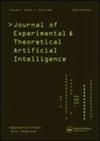用于检测和预测Covid-19的Crispr生物传感和人工智能驱动工具
IF 1.7
4区 计算机科学
Q3 COMPUTER SCIENCE, ARTIFICIAL INTELLIGENCE
Journal of Experimental & Theoretical Artificial Intelligence
Pub Date : 2021-07-19
DOI:10.1080/0952813X.2021.1952652
引用次数: 3
摘要
冠状病毒科由许多具有人畜共患特性的强毒病毒组成,可从动物传播给人类。这些病毒的不同毒株过去曾引起大流行,如2002年的严重呼吸综合征冠状病毒(SARS-CoV), 2012年的中东呼吸综合征冠状病毒(MERS-CoV),以及最近的2019年12月的严重呼吸综合征冠状病毒2 (SARS-CoV-2),也称为COVID-19。科学家们使用了不同的方法来检测和表征冠状病毒,使用的样本包括血清、咽拭子、鼻拭子、鼻咽吸入物和支气管肺泡灌洗液。两种常用的方法包括基于抗原的方法和分子诊断方法,但由于从细胞培养中分离病毒时灵敏度低和生物安全性要求高等限制,阻碍了这两种方法的发展。因此,有必要开发一种更快、更敏感、更简单、更便宜的诊断试剂盒,用于诊断不同的冠状病毒菌株。在本文中,我们概述了2019年新型冠状病毒,大流行,既往流行,诊断,治疗,基于分类和预测的药物检测识别使用人工智能驱动的工具。我们还概述了使用基于crispr的生物传感工具的实验室分子测试和现场测试。我们还概述了基于crispr的生物传感应用和人工智能治疗冠状病毒的现状中实验室技术的局限性和开放研究问题。本文章由计算机程序翻译,如有差异,请以英文原文为准。
Crispr biosensing and Ai driven tools for detection and prediction of Covid-19
ABSTRACT Coronaviridae family consists of many virulent viruses with zoonotic properties that can be transmitted from animals to humans. Different strains of these viruses have caused pandemic in the past such as Severe Respiratory Syndrome Coronavirus (SARS-CoV) in 2002, Middle East respiratory syndrome coronavirus (MERS-CoV) in 2012 and recently Severe Respiratory Syndrome Coronavirus 2 (SARS-CoV-2) also known as COVID-19 in December 2019. Scientists utilised different approaches for the detection and characterisation of CoVs using samples such as serum, throat swabs, nose swabs, nasopharyngeal aspirates and bronchoalveolar lavages. The two common approaches include antigen-based approach and molecular diagnostic approach, which are hindered by limitations such as low sensitivity and requirement for high level of biosafety during isolation of the virus from cell culture. Thus, there is a need for developing a more rapid, sensitive, simple and cheap diagnostic kit for diagnosis of different strains of coronavirus. In this article, we overview 2019 novel coronavirus, pandemic, prior epidemics, diagnosis, treatments, identification of drugs detection based on classification and prediction using artificial intelligence-driven tools. We also overview in-lab molecular testing and on-site testing using CRISPR-based biosensing tools. We also outline limitations of laboratory techniques and open-research issues in the current state of CRISPR-based biosensing applications and artificial intelligence for treatment of Coronaviruses.
求助全文
通过发布文献求助,成功后即可免费获取论文全文。
去求助
来源期刊
CiteScore
6.10
自引率
4.50%
发文量
89
审稿时长
>12 weeks
期刊介绍:
Journal of Experimental & Theoretical Artificial Intelligence (JETAI) is a world leading journal dedicated to publishing high quality, rigorously reviewed, original papers in artificial intelligence (AI) research.
The journal features work in all subfields of AI research and accepts both theoretical and applied research. Topics covered include, but are not limited to, the following:
• cognitive science
• games
• learning
• knowledge representation
• memory and neural system modelling
• perception
• problem-solving

 求助内容:
求助内容: 应助结果提醒方式:
应助结果提醒方式:


